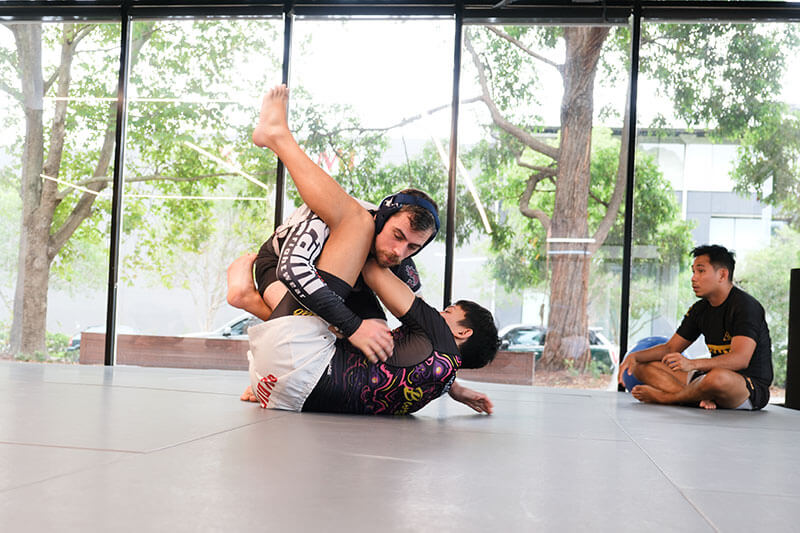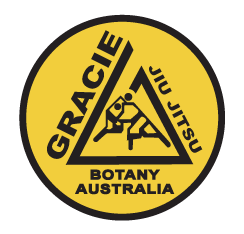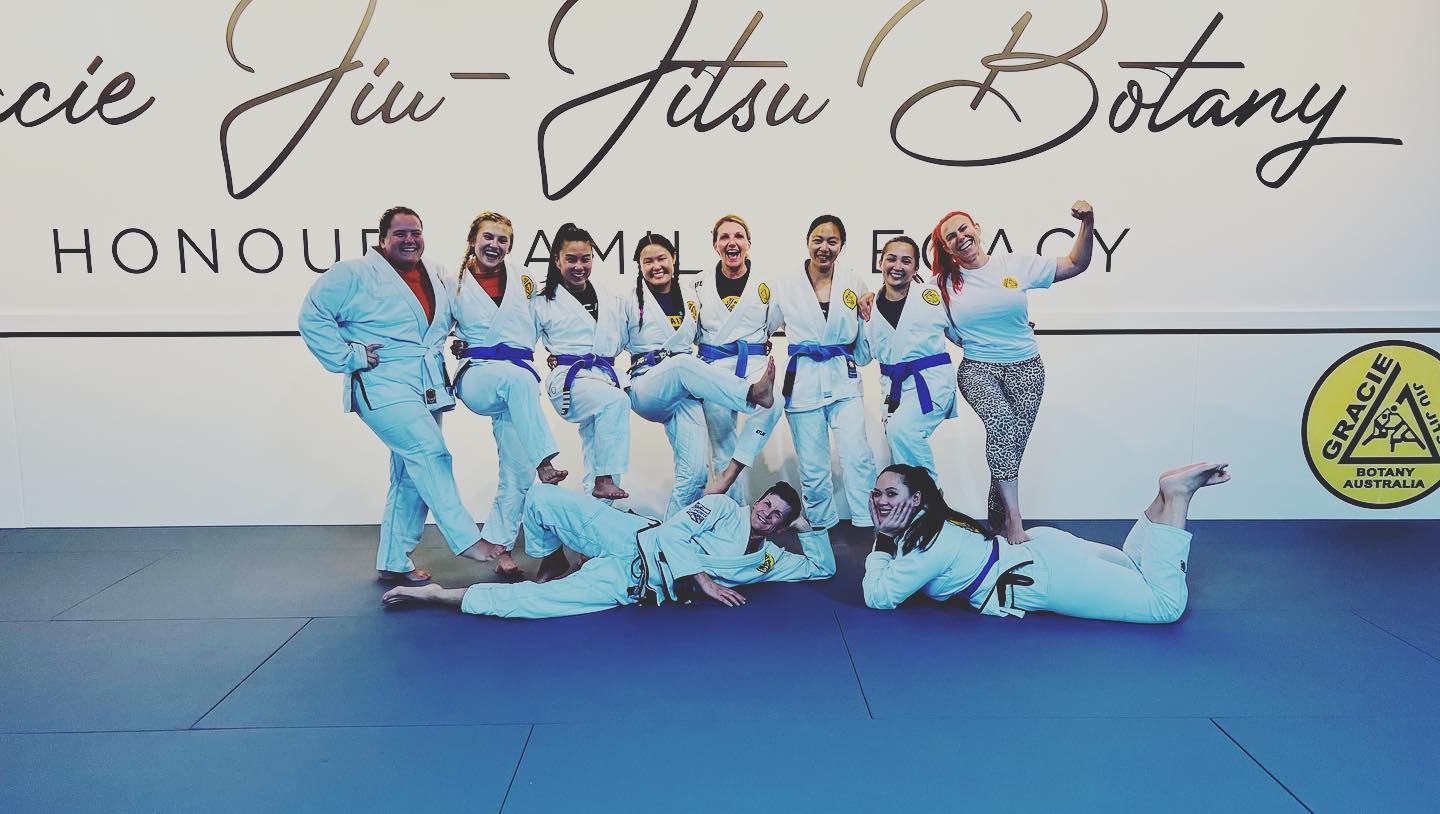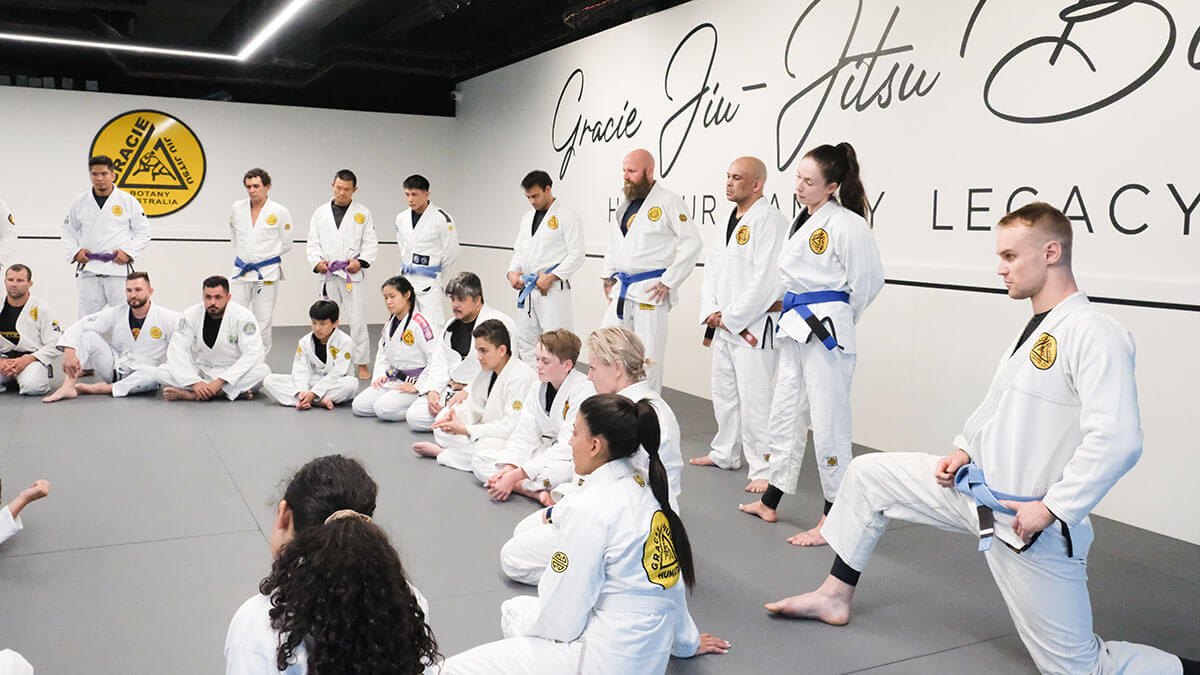Those new to Brazilian Jiu-Jitsu (BJJ) are often surprised by what they see. Walk into our Gracie Botany academy in Sydney’s eastern suburbs and you’ll be greeted by a dozen pairs of people rolling around on the floor.
Where are the punches and the kicks? Aren’t they what martial arts are all about?
Not necessarily. BJJ has become arguably the world’s most renowned self-defence system, and it features no striking. That makes it distinct from disciplines like Karate, which are all about strikes.
At academies like Gracie Botany, we teach students how to defend against striking, but you’ll be learning no punches or kicks yourself. Instead of blunt force, Jiu-Jitsu focuses on leverage and timing. It’s a martial art entirely about grappling, like Judo and wrestling.
In studying Jiu-Jitsu, you learn how to take an opponent to the ground and subdue them by establishing a strong position. And, of course, you’ll learn submission holds. There are dozens of different joint locks and chokes that can be applied in BJJ, the most famous of which is the armbar.
Contrast that with Karate, which focuses on training practitioners to put their whole body into explosive punches and kicks. There are many self-defence benefits to training Karate – there’s a reason it’s the first thing many people think of when the phrase “martial art” is said. Here’s how it compares to Jiu-Jitsu.

Basics of Karate and BJJ training
Like disciplines such as Taekwondo, Karate teaches students to condition their mind, body and focus so as to maximize the power of striking. Karate is a mixture of athleticism, coordination and focus to achieve its goals.
Many of Karate’s striking techniques can easily take out an aggressor. The most famous may be the Roundhouse Kick, wherein students clock their opponent’s torso or head in the instep of their foot.
Traditional Karate also includes some throws, though these are often not taught in modern schools.
Brazilian Jiu-Jitsu, meanwhile, is a grappling art designed to work for people facing bigger, stronger opponents. Its roots are in Judo, another grappling discipline. As noted above, BJJ is famous for taking place almost entirely on the ground. There’s an important reason for this: It’s harder to generate power when you’re on the ground.
BJJ’s creators, Helio and Carlos Gracie, modified Judo techniques to be usable on the ground. The idea is to use leverage and timing to overcome differences in size and strength. Jiu-Jitsu shot to worldwide fame in the first UFC tournaments, when Royce Gracie used it to defeat several opponents much larger than himself.
Jiu-Jitsu is also unusual in that it is a spar-heavy martial art. Adult practitioners will spar (or “roll”) from their first or second lesson. After a few months of training, students will be able to roll at high intensity against a fully-resistant opponent with minimal injury risk. This is because the absence of strikes and slams (which are in Judo) greatly reduce injury opportunities.

So which is better for self defence?
Both BJJ and Karate have different advantages when it comes to self-defence. As a proud Jiu-Jitsu academy, we’re obviously biased at Gracie Botany. But here’s a run down of the arguments typically made in favour of the respective martial arts.
First, take Jiu-Jitsu. Above I mentioned BJJ is a spar-heavy martial art. That is itself a major self-defence benefit. When you roll against resisting opponents, you get to test out in real time what techniques work and do not work against an aggressor. It also gets you accustomed to the fast pace of an altercation.
Contrast that to Karate, where strikes are more often practiced on inanimate objects or with heavily padded sparring partners.
Jiu-Jitsu also has less emphasis on conditioning and athleticism, since its very point is that it should work against people bigger and fitter than you. Obviously, athleticism and size are assets in Jiu-Jitsu, but technique can overcome them. A 60kg purple belt, for instance, will almost always beat a 100kg white belt.
Finally, BJJ allows a range of reactions in self-defence scenarios. You’re able to outmaneuver and escape a foe, or subdue them without harming them. In extreme situations, you can apply a debilitating submission hold. Karate, like other martial arts, often limits practitioners to striking attacks. These are effective, but can risk grave injury to the aggressor that sometimes may not be warranted.
Karate though is not without its self-defence strengths. Most Jiu-Jitsu techniques take place on the ground, ideal for a one-on-one scenario but less effective against a crowd. Karate is also great for getting out of bad altercations. Speed and agility are important traits in Karate, making it easier for practitioners to quickly strike and then run away before the scenario escalates.
If you’re interested in trying out BJJ, come to Gracie Botany in Sydney’s eastern suburbs for a free trial class.



